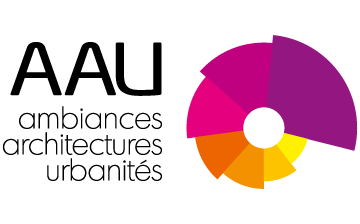Effets chromatiques et méthodes d’approche de la couleur dans la démarche de projet architectural et urbain
Chromatic effects and methods of colour approach in the architectural and urban project
Anne Petit - Thèse de doctorat soutenue en 2015
Encadrement : Directeur de thèse Daniel Siret, encadrante Nathalie Simonnot
FR
La thèse part du constat de l’émergence d’un phénomène de coloration vive et inhabituelle de l’architecture dans les paysages urbains contemporains en développement. Après avoir contextualisé ce phénomène (impact des nouveaux matériaux et normes d’isolation des bâtiments, nouvelle écriture architecturale ornementale, contexte économique en crise, développement de l’architecture de communication), nous mettons en évidence les enjeux liés à une meilleure connaissance des effets de la couleur sur notre perception de l’espace urbain, et au manque de méthodes adaptées pour aborder la couleur dans la démarche de projet. L’analyse des stratégies de « color planning » existantes montre la nécessité d’établir des indications chromatiques en amont des projets. L’expérience des coloristes témoigne également de l’importance de la prise en compte des multiples variations des couleurs sous les effets de la lumière, du climat ou du mouvement.
Pour répondre à ces enjeux, nous proposons d’aborder la question de la couleur urbaine à travers la notion d’effet sensible (effet d’avancée des couleurs, d’appel visuel, de trou noir par exemple). Nous formulons ainsi une amorce de répertoire d’effets chromatiques urbains que nous mettons à l’épreuve par une enquête à Nantes. Une vingtaine d’effets chromatiques répartis en cinq catégories sont ainsi définis : effets à dominante optique, à dominante climatique et lumineuse, à dominante psychomotrice, à dominante spatiale et formelle et à dominante sémantique.
Des représentations graphiques utilisant les potentialités de l’imagerie numérique sont proposées pour exprimer et communiquer ces effets dans le contexte du projet architectural et urbain.
Mots clés : Couleur, color planning, effets chromatiques, projet urbain, architecture colorée, représentation graphique, paysage urbain, ambiances
EN
The thesis starts with the observation of a phenomenon of an unfamiliar and insistent architectural polychromy in the new quarters in mutation. After the contextualization of the coloured phenomenon (new materials, thermal insulation standards, new architectural approach based on ornament, context of the economic crisis, development of communication architecture), we highlight the interest of a better knowledge of the effects of colour on our perception of space, and the absence of adapted methods to consider colour in the architectural and urban project. The analysis of the « colour planning » strategies shows the need to establish chromatic indications upstream of the projects. The experience of the colorists demonstrates the importance of considering the multiple colour variations under effects of light, climate and movement.
To respond to these issues, we propose to approach the question of the urban colour through the concept of the « sensory effect » (for example the visual « advance » of colours toward the observer, the visual « call », the black hole). We propose a repertoire of the chromatic effects (in draft stage) that we test on a survey in the French city of Nantes. About twenty effects are divided in several categories and defined: effects on optical field, effects from climate and light, psychomotor effects, effects on space and form, and semantic effects. Graphic representations using digital imaging tools are proposed to express and communicate these effects in the context of urban and architectural project.
Key Words : Colour, color planning, chromatic effects, urban project, coloured architecture, graphic representation, urban landscape, ambiances
